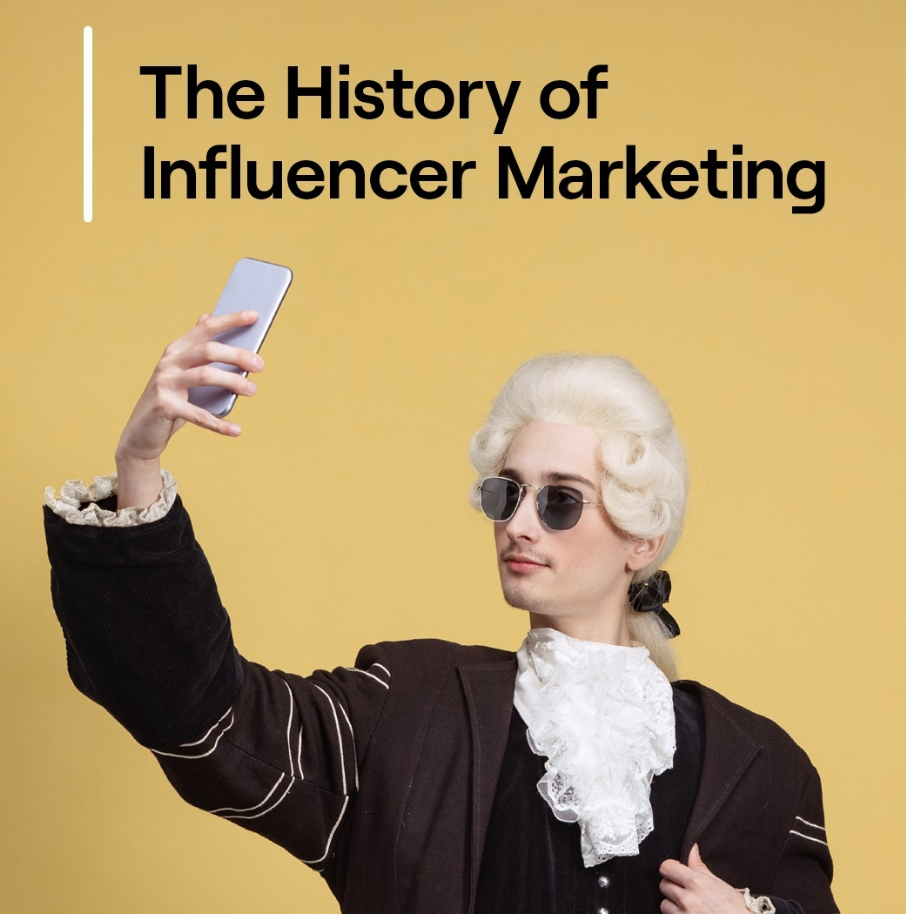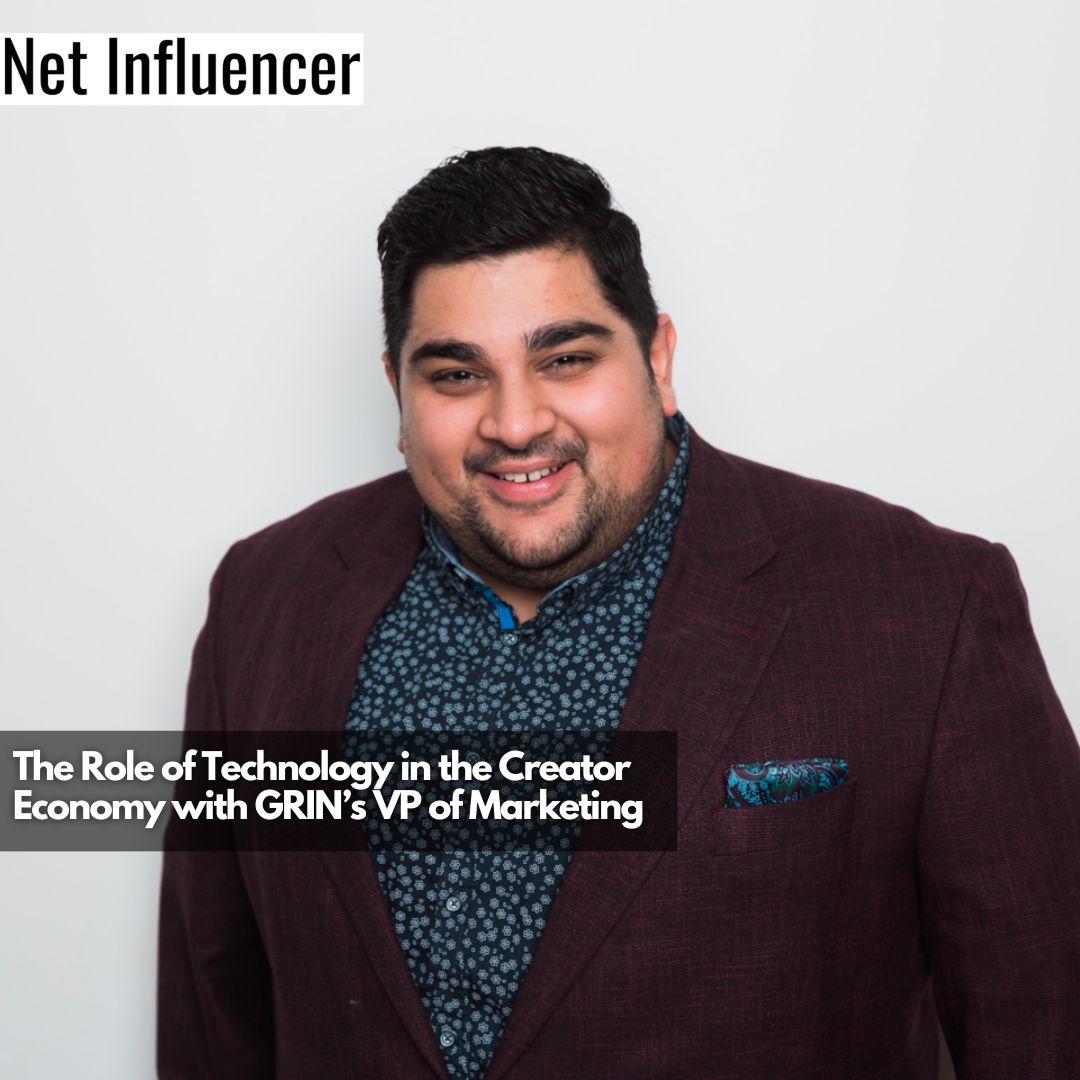Technology
How Technology Plays a Role in the Creator Economy with Ali Fazal, VP of Marketing at GRIN
The influencer marketing industry is changing every single day, making it challenging and time-consuming for everyone, even professionals in the industry, to stay on top of new changes. One way brands can save time is by streamlining their influencer marketing process and reducing the manual work needed to record and assess campaign data. Creator management platform GRIN offers these solutions with an all-in-one platform that activates, tracks, and streamlines the influencer marketing process for brands.
About Ali Fazal
Ali Fazal, Vice President of Marketing at GRIN, has an extensive background in marketing and the e-commerce and direct-to-consumer space. Previously, he was the Senior Director of Marketing at Hibob, the Director of Marketing and Demand Generation at Yotpo, and the Head of Business Development at Greenhouse Software.

Ali shares, “I find it really interesting and fascinating to do marketing because it’s constantly changing compared to other industries that are maybe a little more stable and a little slower to innovation.”
What is GRIN?
GRIN is an all-in-one creator management platform helping e-commerce companies build brand-boosting relationships through the power of creator partnerships. The GRIN platform helps brands at every stage of creator collaboration, including activations, campaigns, term agreements, and more. Payments for campaigns are also processed through the platform.
In addition, brands can quickly assess campaign performance with GRIN’s detailed data.
Ali explains, “We don’t work directly with influencers. Our customers are brands, so if you take Skims or Allnbirds, for example, the person who runs influencer marketing for that brand will use the GRIN platform to streamline their operations and help them grow and scale their influencer programs.”
In short, GRIN’s clients are brands looking to launch themselves to new levels with influencer marketing. The brand marketing team uses the platform themselves because they know their ethos, vibe, goals, revenue targets, and much more, best, allowing them to select the best influencers for their company.
He adds, “The key ethos for us is really cutting out the middleman. I think so much of influencer marketing in the old world was done through agencies and third-party marketplaces, so these are places where an influencer can go and sign up to be part of a database… Our fundamental belief is that the best influencer and brand relationships are organic and come from a true affinity for the brand.”
GRIN is designed to empower brands during their one-on-one relationships with creators. GRIN also offers brands educational content on the best ways to use and execute influencer marketing.
Ali explains, “My team is really responsible for helping provide content and guidance and education to brands to help them understand how to accurately represent business results, how to form those one-on-one relationships with creators, how to find the best creators, how to build successful relationships with them, [and] how to drive business outcomes from that relationship.”
The Role of Technology in Influencer Marketing
For brands just getting started with influencer marketing, it’s easy to manage and track everything in a single spreadsheet, especially when you’re only working with one or two influencers.
This process becomes increasingly complex as a brand grows, particularly for brands with extensive mailing lists that must record an influencer’s mailing address, name, phone number, size/preferences, and much more.
For example, Ali shares, “If you have a hundred influencers a day posting Instagram stories that disappear after 24 hours, who on your team is going to go through and screenshot all those stories? Let’s say you need to ship a hundred creators a new product that you’re launching as a brand, is someone from your team going to have to go to FedEx and put a hundred different products and boxes and ship them to creators?”
This process quickly becomes inefficient, making it critical to involve technology to help you manage and streamline your influencer marketing processes.
Staying on Top of a Rapidly Changing Industry
The influencer marketing industry is evolving every single day, making it difficult for anyone, even industry professionals, to stay on top of all the microchanges.
However, these small changes can mean the difference between success and failure.
Ali notes, “It’s our responsibility to keep up with what’s going on, but it’s also our responsibility to lead and help drive new innovation and best practices in the creator economy as well.”
Part of this future includes GRIN’s vision that every global consumer brand will one day have a creator management platform to track creator relationships. These relationships could be traditional social influencers, podcasters, athletes, PR professionals, journalists, affiliates, brand advocates, and much more.

He explains, “The end goal is to essentially be the system of record that every consumer brand uses to manage all of their different creator relationships under one roof.”
Creator management platforms like GRIN can also help brands free up time, allowing them to stay on top of current trends and changes easily.
Exciting Plans
Ali reveals that GRIN is working on pioneering a couple of new products, but he can’t share the specific details yet. These products will provide customers and brands with new ways to thrive, especially with the tight economic situation we’re facing. He is very excited about the product launch and helping more brands be successful with their creator relationships.
He adds, “As an entity, it’s really our responsibility to provide the technology that brands can use to thrive in the creator economy, and it’s a space where the rules are so unwritten. There’s no one template for success, even amazing brands that are doing it really well. You can take exactly what they are doing and try to replicate it, and it may not work.”
As a result, customized influencer marketing approaches are essential for brands, rather than approaching influencer marketing as “copy and paste.” Unlike other marketing practices, like email marketing or paid digital advertising, there are no best practices for influencer marketing, at least not in a singular way, according to Ali.
“I think what we’ve learned in the creator economy is that every brand is so different. Every audience is so different. Every relationship between one creator and one brand is so different. That really it’s about making sure that you offer brands the flexibility to be able to build a program on their own terms.”





















